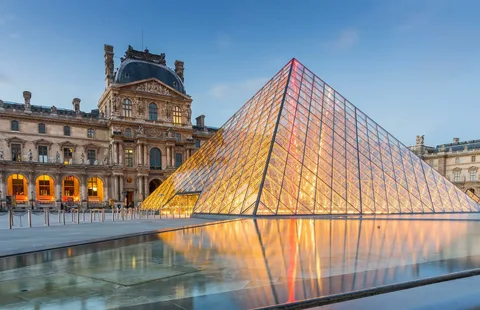In the world of architectural and industrial design, louvre systems have become an essential component for enhancing ventilation, privacy, and aesthetic appeal. Whether used in commercial buildings, residential complexes, or industrial setups, modern louvre systems offer versatility and functionality. This article provides a complete guide to modern louvre systems: design, types, and applications, helping you understand how these systems can be optimally utilized.
What Are Louvre Systems?
Louvre systems are architectural elements composed of angled slats or blades, usually made from materials like aluminum, glass, wood, or steel. These slats allow air and light to pass through while blocking direct sunlight, rain, or unwanted visibility. The main purpose of a louvre system is to improve ventilation and provide shading, contributing to energy efficiency and occupant comfort.
Design Principles of Modern Louvre Systems
Designing modern louvre systems requires a careful balance of functionality and aesthetics. Key design considerations include:
1. Material Selection
Modern louvres are often fabricated from durable materials such as powder-coated aluminum, stainless steel, or treated timber. Each material offers different benefits in terms of strength, corrosion resistance, and maintenance.
2. Blade Angle and Spacing
The angle and spacing of the louvre blades determine the level of light and airflow control. Adjustable louvres allow flexibility, enabling users to regulate ventilation and sunlight according to weather conditions or time of day.
3. Integration with Building Façades
Louvre systems can be seamlessly integrated into building façades, contributing to the overall architectural expression. Designers often use louvres as dynamic shading devices or decorative elements.
4. Automation and Control Systems
Advancements in technology have introduced automated louvre systems with motorized blades controlled by sensors or smart home systems, enhancing convenience and energy efficiency.
Types of Modern Louvre Systems
When exploring a complete guide to modern louvre systems: design, types, and applications, it is important to understand the various types available:
1. Fixed Louvre Systems
Fixed louvres have blades set at a specific angle and cannot be adjusted. They are commonly used for permanent shading and privacy solutions.
2. Adjustable Louvre Systems
These louvres have blades that can be manually or automatically adjusted to control airflow and light. They are ideal for environments requiring flexible ventilation.
3. Vertical and Horizontal Louver Systems
Louvres can be oriented vertically or horizontally based on the architectural requirements. Vertical louvres are often used for sun control on east and west facades, while horizontal louvres suit south-facing facades in the northern hemisphere.
4. Operable Glass Louvre Systems
These systems incorporate glass blades that open and close, combining ventilation with transparency and modern aesthetics.
Applications of Modern Louvre Systems
Louvre systems have a wide range of applications across various industries:
1. Residential Buildings
In homes, louvre systems enhance natural ventilation, provide privacy, and add an architectural feature to windows, patios, and balconies.
2. Commercial and Office Buildings
They serve as sun-shading devices to reduce cooling loads, improve occupant comfort, and reduce glare on computer screens.
3. Industrial and HVAC Systems
Louvres protect ventilation ducts and equipment from weather elements while allowing airflow.
4. Public Spaces and Facades
Louvre systems are used in stadiums, museums, and other public buildings to create dynamic façades that respond to environmental conditions.
Conclusion
Understanding a complete guide to modern louvre systems: design, types, and applications empowers architects, engineers, and building owners to make informed decisions about integrating louvre systems into their projects. From their functional benefits in ventilation and shading to their aesthetic contributions, modern louvre systems continue to evolve with technology, offering smarter and more sustainable building solutions.

